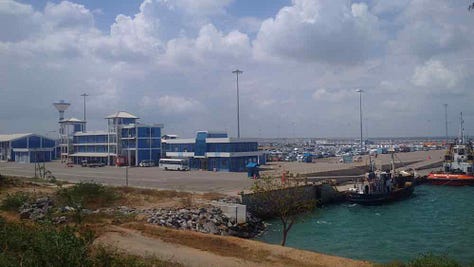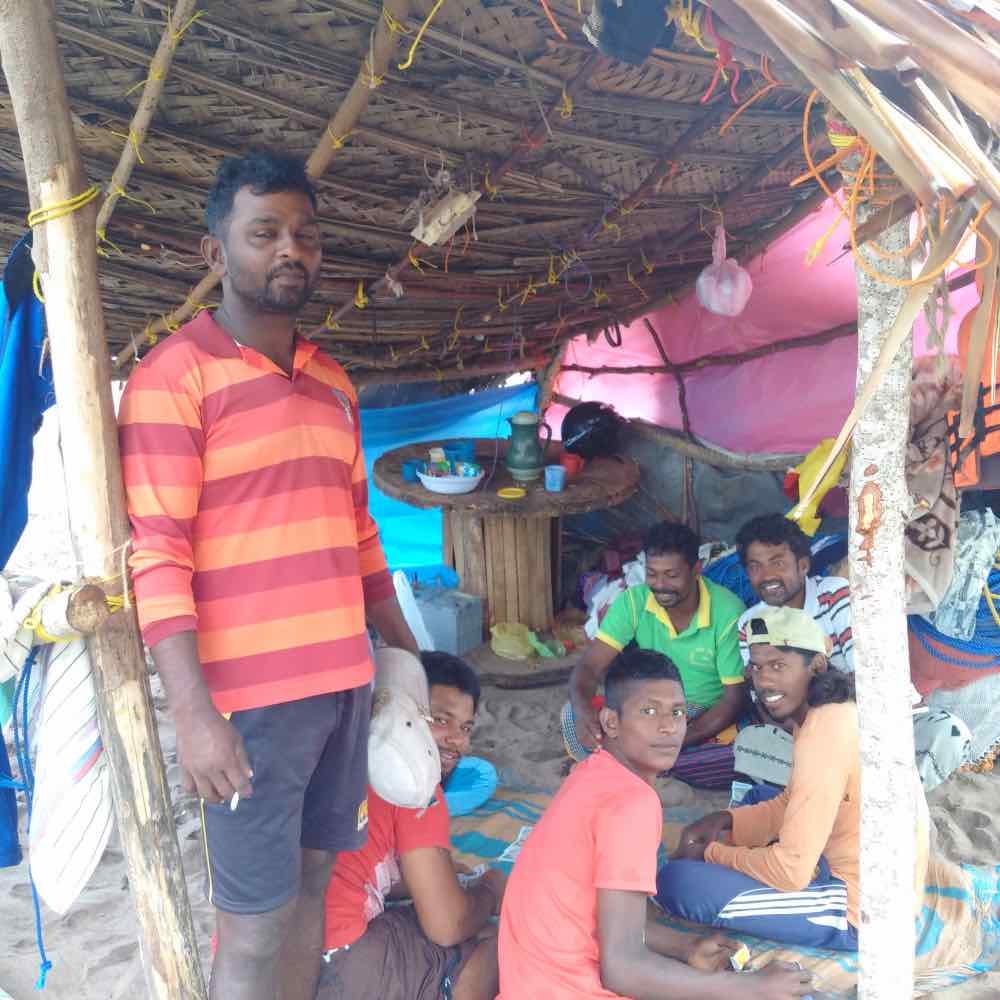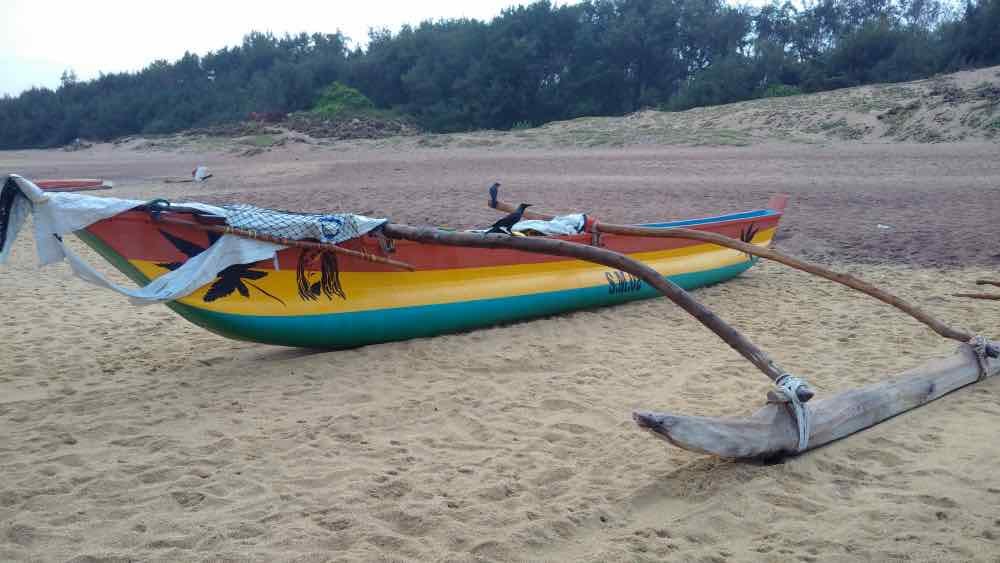An Inside Look At Hambantota - Chinese Colony Or Sri Lankan Dream?
Hambantota isn’t just a place in Sri Lanka, it's a lesson.
Hambantota isn’t just a place in Sri Lanka, it's a lesson. Located 250 kilometers from Colombo, this was once a place best know for its nature preserves, jungle tours, and pristine beaches. Today, it’s a metaphor for opaque government dealings, poor planning, and rivalries between vying political factions. What started out as an ambitious endeavor to transform an undeveloped swath of Sri Lankan jungle into the country’s number two city soon descended into a parable of what happens when China presents its bags of money to corrupt, polarized democracies for massive development projects that are out of their league. It’s the story of how gluts of half-finished developments are left hanging in the balance when governments are voted out of power and what happens when the bill for these under-producing projects comes due. The dream was for Sri Lanka and China to join together in the building of a new masterplanned city that would show the world what the Belt and Road could do. Instead, it showed the world precisely what the Belt and Road actually does.
It’s an uncomfortable experience looking through the photo album of someone from Hambantota. This small town at the southern tip of Sri Lanka was virtually wiped off the map by a tsunami in 2004, which killed over 30,000 people in throughout the country. Almost invariably, every second or third person in the pictures are no longer around anymore.
I sat on the beach with Mahesh, a fisherman who now works at a little bed and breakfast right down the coast from Hambantota port, as he flipped through a photo album.
“He isn’t here anymore. He was killed by the tsunami.”
He then flipped to another page.
“He isn’t here anymore,” he pointed out a young guy whose arm was interlocked with a young version of himself. “He isn’t here anymore,” he pointed to another.
Eventually he began just pointing at people in photos and say a single word: tsunami.
“Tsunami.”
“Tsunami.”
“Tsunami.”
“Not many people talk about what happened here,” he continued. “More than 1,000 people died here on that day.”
“What was this place like before?” I asked.
“I wish I didn’t have to remember anything from before,” he replied after a long pause. “I used to have a bungalow hotel on this beach. Look here, you can see it.”
He pointed to photo of him smiling in front of a bamboo and palapa hotel.
“It is gone now. I used to have a very nice Jeep. It was taken away too.”
He flipped through some pages of photos of him taking tourists into the jungle in a white Jeep.
His jungle tours, his small hotel, and his stall in the market where he sold fish was how he made his livelihood. All of it was washed away in an instant.
“Here’s a picture of me selling fish.”
The rippled and bent old 35mm photos that he was showing me told of a different era here. He was smiling big in all his photos. He was young, muscular, and always with friends. Looking at his photos were like looking into someone’s rose-tinted memories of the past.
Mahesh took a group of tourists on a trip to the jungle one day and returned to find his entire life washed away. He is now the night guard at a hotel on the beach that doesn’t attract many guests. I believe I was the only one there during my stay. He touts at the bus station. His face is worn, his hair fell out. He never recovered.
Hambantota hasn’t either. Much of what was destroyed was never built again.
We sat there for a moment in silence, looking out at the sea. The waters looked so calm today, gently lapping against the shore.
Another man eventually walked up and sat down with us and told me his story. He was 58 and lived his entire life in that small village.
“I once had a wife and two children,” he said. But they are all gone. Tsunami. Now I am all alone.”
He now sleeps at night in whatever unoccupied plastic lawn chair he can find on the beach. Tonight he is curled up on one in front of my door.
15 years ago this place was wiped out by a tsunami. Today, the waves of development are rolling through as the place is being reimagined as a global center for trade.
This is Hambantota, a place that the Sri Lankan government has been trying to develop by any means necessary since 2010. It started out as the dream of President Mahinda Rajapaksa: to transform his impoverished, tsunami-ravaged home region in the remote south of Sri Lanka into the country’s number two city. A massive $1.5 billion deep sea port would be built, a $209-million international airport would be dropped between two wildlife preserves, and a massive convention center, a cricket stadium, new luxury resorts, and new, higher-end residential neighborhoods would be created out of proverbial nothing. Holding this scheme together was a proposed industrial zone, which would give ships a reason to come into port and a place for people to work. It was to be a completely new city built in a place best known for its elephant tours, the eastern terminus of corridor of coastal development that would stretch to Kandy and Colombo beyond, an entirely new economy that would catapult Sri Lanka into the modern world — almost completely financed with Chinese money.
However, the reasons for Rajapaska’s proclivity for finding Chinese partners for his development projects wasn’t completely due to personal preference but as a reaction to political and economic pressure from the West. Between the 2006 and 2009, the EU and U.S. shut down most economic concessions and sources of aid to Sri Lanka to demonstrate their disapproval of alleged abuses that transpired during the final stages of the country’s decades-long civil war. Dubbed war crimes, the Sri Lankan government was called up before the UN Human Rights council and in 2009, when the EU’s GSP-Plus trade concessions to Sri Lanka came up for renewal, an ultimatum was issued: comply with a list of human rights related demands or no money for you. Sri Lanka declined to engage and the concessions were discontinued. On the same grounds, the United States also cut back on many sources of aid.
“Then China came in and filled that diplomatic vacuum,” Dushni Weerakoon, a researcher at the Colombo-based Institute of Policy Studies, told me as we sat in her office drinking tea.
While the West tried to exert political and economic pressure on Sri Lanka to force the country to atone for alleged humanitarian abuses, what they actually did was push the country into a closer alliance with China. As sources of Western funding dwindled, China made up the difference and then some, pumping the country with over $8 billion in soft loans destined for infrastructural development.
“China has a hands-off approach,” Weerakoon explained. “It will give you money and let you do what you want to do. They won’t lecture you on humans rights.”
In the years that followed, Sri Lanka virtually became an outpost for Chinese development. Chinese-backed highways, ports, airports, convention centers, stadiums, and even an entirely new financial district built on reclaimed land began proliferating over the country. The details of many of these projects were extremely murky and, allegedly, extremely corrupt. Mahinda Rajapaksa, who was president for nine years and reigned with near omnipotence, remains a highly polarizing, controversial figure in Sri Lanka. He is held by some to be a national hero, having ended a decades-long civil war; while to others he is a corrupt, despotic war criminal.
I walked down the beach towards the new deep sea port that the locals simple refer to as China Harbor. Development of the port began in 2008 and it was slated to become the world’s largest port constructed on land, taking up 16 square kilometers and providing capacity for 33 ships. It was financed by China, built by China, and run by COSCO Shipping, one of China’s finest. While Hambantota was originally a national Sri Lankan project it soon became a core part of Chinese President Xi Jinping’s plan to construct a string of Chinese-controlled shipping hubs from the east coast of China to Africa and Europe along the Maritime Silk Road.
But in this fray of all out development, the people Hambanota seem to have been conspicuously left out of the picture.
“We don’t want to see it like Dubai, with big buildings everywhere and no trees,” Mahesh said. “This is Sri Lanka, we like green, all of this development — I’ve seen it since I was a kid — they make some new buildings but it is still the same.”
When I asked what he thinks of China Harbor he just shrugged, as though it was something remote and irrelevant, far removed from his life rather than the venerable fortress of trade rising up within view right down the beach.
“The old government, they start something then the new government they are slow to keep doing it,” he spoke gruffly and shrugged as he turned and walked away. It had nothing to do with him.
I walked down the beach and some young fishermen began waving at me. They saw me taking photos of their boats, which they painted with an array images and colors — one being painted to look like a Jamaican flag with a big Bob Marley head on the bow. They were sitting in a circle under a shoddily assembled palapa hut blasting reggae music from a small speaker that was hanging from one of the beams. They were thin, dressed in ragged t-shirts and torn shorts, and were smiling and smoking after returning from a morning of fishing. I asked them about the port and how it impacted them.
They told me that since construction began their fishing grounds had been limited. They were barred from fishing anywhere near the port, needed to go farther out to sea, and had to dodge the occasional freighter.
“They make it fail,” one of them said suddenly
“Is the fishing worse now?” I asked, wondering what exactly he meant by that.
“Yes, very worse.”
“Can you fish by the port?”
“No, they have navy. Very dangerous.”
Life goes on in Hambantota as though the port and other new infrastructure projects didn’t exist. The rural status-quo churns onward in spite of the fact that the landscape is being physically altered being by all-out fiat. The massive projects of the BRI reshape places with a distinct absence of citizen engagement, as though they are somehow encapsulated away from the local ecosystem. While people in these new epicenters of development are told that these big mega-projects will be to their benefit, the sheer disconnect between the locals and the projects is remarkably stark. The people there who continue their traditional ways of life are often removed from the scene, either physically displaced by the state’s relocation committees or ignored completely. The environment is degraded, the landscape turns from green to brown to grey. And those opportunities for employment may or may not materialize.
The idea of a port at Hambantota wasn’t completely without logic. Sri Lanka has been pondering building a port there since 1977, as it sits on the doorstep of one of the busiest shipping lanes in the world, with 70,000-80,000 ships pass right by it each year. While it takes four hours for ships to divert from their routes to stop in Colombo it would only take 45 minutes to go to Hambantota. It was thought — or at least pitched — that a new port could attract upwards of 10,000 of these ships, creating 50,000 local jobs in the process. Another aspect of the plan that seemed to make sense was that Hambantota was never meant to compete with the booming Colombo port, as it was designed to handle bulk cargo, such as car parts and crude oil, whereas Sri Lanka’s primary port would mostly handle containers.
However, the Asia Maritime Transparency Initiative immediately casted doubts on these projections, stating that “the economic rationale for Hambantota is weak, given existing capacity and expansion plans at Colombo port, fueling concerns that it could become a Chinese naval facility.”
But they built it. And they didn’t come. Hambantota continues to operate at severe under capacity, as the bulk of ocean traffic passes right by the place at full throttle.
Photo gallery

















